
The Majestic Queen Elizabeth National Park: Uganda's Wildlife Wonderland
Discover Queen Elizabeth National Park in Uganda, a wildlife haven with diverse landscapes, iconic tree-climbing lions, and rich cultural experiences.
Nestled in the heart of western Uganda, Queen Elizabeth National Park is a sanctuary of breathtaking landscapes and diverse wildlife. Spread across 1,978 square kilometers, this park offers an unforgettable safari experience. From the lush savannah to the stunning crater lakes, every corner of the park is brimming with natural beauty. The Kazinga Channel, a natural waterway, is home to the largest concentration of hippos in the world and provides excellent opportunities for boat safaris and bird watching. Queen Elizabeth National Park is also renowned for its incredible biodiversity. The park is home to over 95 mammal species, including the famous tree-climbing lions of Ishasha, elephants, buffaloes, and leopards. Additionally, with over 600 bird species, it's a birdwatcher's paradise. The Maramagambo Forest within the park is a haven for primates, including chimpanzees and various monkey species. The park's rich cultural heritage adds another layer to its allure. Visitors can engage with local communities through cultural tours and learn about the traditions and lifestyles of the indigenous people. The Katwe salt lake is another unique attraction, where you can witness traditional salt mining practices that have been passed down for generations.
Local tips in Queen Elizabeth National Park
- Visit during the dry seasons (June to September and December to February) for the best wildlife viewing opportunities.
- Book a boat safari along the Kazinga Channel to see large concentrations of hippos, crocodiles, and water birds.
- Don't miss the tree-climbing lions in the Ishasha sector; early morning or late afternoon are the best times to spot them.
- Pack light, breathable clothing and insect repellent to stay comfortable and protected during your visit.
- Engage with local communities through cultural tours to enrich your understanding of the area's heritage.
The Majestic Queen Elizabeth National Park: Uganda's Wildlife Wonderland
Nestled in the heart of western Uganda, Queen Elizabeth National Park is a sanctuary of breathtaking landscapes and diverse wildlife. Spread across 1,978 square kilometers, this park offers an unforgettable safari experience. From the lush savannah to the stunning crater lakes, every corner of the park is brimming with natural beauty. The Kazinga Channel, a natural waterway, is home to the largest concentration of hippos in the world and provides excellent opportunities for boat safaris and bird watching. Queen Elizabeth National Park is also renowned for its incredible biodiversity. The park is home to over 95 mammal species, including the famous tree-climbing lions of Ishasha, elephants, buffaloes, and leopards. Additionally, with over 600 bird species, it's a birdwatcher's paradise. The Maramagambo Forest within the park is a haven for primates, including chimpanzees and various monkey species. The park's rich cultural heritage adds another layer to its allure. Visitors can engage with local communities through cultural tours and learn about the traditions and lifestyles of the indigenous people. The Katwe salt lake is another unique attraction, where you can witness traditional salt mining practices that have been passed down for generations.
When is the best time to go to Queen Elizabeth National Park?
Iconic landmarks you can’t miss
Murchison Falls National Park
Discover the breathtaking beauty and adventure of Murchison Falls National Park, Uganda's largest national park, home to stunning landscapes and diverse wildlife.

Bwindi Impenetrable Forest National Park
Explore the breathtaking Bwindi Impenetrable Forest National Park, home to endangered mountain gorillas and rich biodiversity in Uganda.

Lake Mburo National Park
Explore the breathtaking landscapes and diverse wildlife of Lake Mburo National Park, a premier destination for nature enthusiasts in Uganda.

Kibale National Park
Explore the breathtaking Kibale National Park, home to diverse wildlife, vibrant ecosystems, and unforgettable primate adventures in Uganda.

Ziwa Rhino and Wildlife Ranch
Experience the beauty of Uganda at Ziwa Rhino and Wildlife Ranch, where adventure meets conservation in a stunning wildlife sanctuary.

Rwenzori Mountains National Park
Explore the breathtaking beauty of Rwenzori Mountains National Park, a UNESCO World Heritage site home to diverse ecosystems and stunning landscapes.

Kidepo National Park Uganda
Discover the breathtaking landscapes, diverse wildlife, and rich culture of Kidepo National Park, Uganda's hidden gem for nature lovers.

Mgahinga Gorilla National Park
Explore the breathtaking landscapes and rich biodiversity of Mgahinga Gorilla National Park, a UNESCO World Heritage site and home to the majestic mountain gorillas.

Mabira Central Forest Reserve
Explore the lush beauty and diverse wildlife of Mabira Central Forest Reserve, Uganda's breathtaking natural gem ideal for nature lovers and adventure seekers.

Pian Upe Game Reserve
Experience the breathtaking landscapes and diverse wildlife at Pian Upe Game Reserve, a true haven for nature lovers and adventure seekers in Uganda.
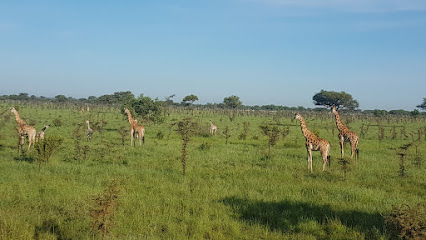
Queen Elisabeth Bush Lodge
Discover tranquility and adventure at Queen Elisabeth Bush Lodge, your gateway to Uganda's stunning wildlife and natural beauty.

Semuliki National Park
Explore the breathtaking landscapes and diverse wildlife of Semuliki National Park, a hidden treasure in Uganda's lush wilderness.

Ngamba Chimpanzee sanctuary on lake victoria
Explore Ngamba Chimpanzee Sanctuary on Lake Victoria, a unique wildlife sanctuary dedicated to the rescue and rehabilitation of orphaned chimpanzees.

ishasha sector
Explore the Ishasha Sector in Queen Elizabeth National Park, home to tree-climbing lions and diverse wildlife in a stunning Ugandan landscape.

Ishasha Wilderness Camp - Queen Elizabeth National Park
Discover the enchanting beauty of Ishasha Wilderness Camp, a sustainable lodge in Queen Elizabeth National Park, Uganda, perfect for wildlife enthusiasts and nature lovers.

Unmissable attractions to see
Lake Mburo National Park
Experience the natural beauty and diverse wildlife of Lake Mburo National Park, a serene escape in Uganda's stunning landscapes.

Rwenzori Mountains National Park
Discover the breathtaking beauty and adventure of Rwenzori Mountains National Park, a UNESCO World Heritage Site in Uganda, filled with unique wildlife and stunning landscapes.
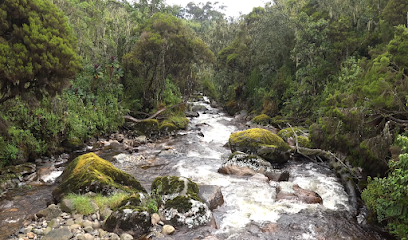
Woodland Country Home
Experience the tranquility and cultural richness of Woodland Country Home, a serene retreat nestled in the lush landscapes of Mahyoro.
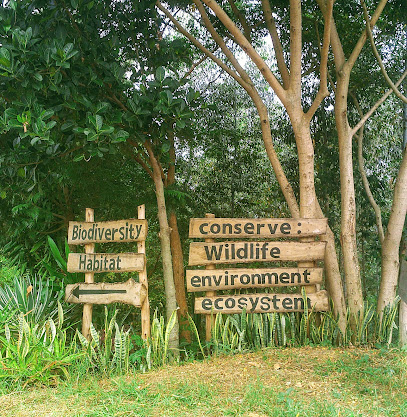
Nkokonjeru Tombs
Explore the historical richness of Nkokonjeru Tombs in Mbarara, Uganda, a serene site reflecting the cultural heritage of the region.

Katwe Explosion Craters Track
Explore the stunning volcanic landscapes and rich biodiversity of Katwe Explosion Craters Track, perfect for hiking and wildlife adventures.

Kiwa herritage Hot Springs
Explore the serene and rejuvenating Kiwa Heritage Hot Springs in Kasese, where healing waters and natural beauty await you in Uganda.

Chimp Tracking
Experience the thrill of chimp tracking in Uganda's lush national park, a must-visit for wildlife lovers and adventure seekers alike.

Queen Elizabeth National Park Tourisit Vehicle for Hire at Katunguru
Explore the diverse ecosystems and abundant wildlife of Queen Elizabeth National Park, a gem of Uganda's natural heritage.

Nyungu Crater Lake
Experience the tranquility and breathtaking beauty of Nyungu Crater Lake in Rubirizi, Uganda, an ideal destination for nature lovers and adventure seekers.

Kyambura walking Tours
Immerse yourself in the natural beauty of Kyambura Walking Tours, featuring stunning Lake Katinda and rich local culture.

Kororo falls
Experience the breathtaking beauty of Kororo Falls in Kanyansi, a top hiking destination in Uganda, perfect for nature lovers and adventure seekers.

Kazumilo travels
Explore the stunning views at Kazumilo Travels, a scenic attraction near Bunyaruguru that showcases the breathtaking beauty of Uganda's landscapes.
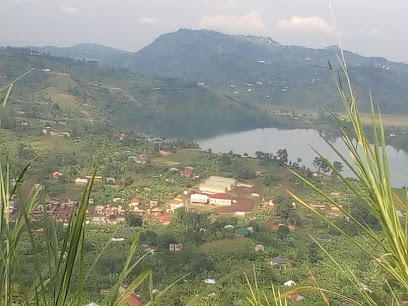
Crater Lakes Adventures
Discover the breathtaking beauty of Uganda's wildlife and ecosystems at Crater Lakes Adventures in Queen Elizabeth National Park. A paradise for nature lovers!

بحيرة Bunyaruguru الرحال السعودي
Discover the serene beauty and rich biodiversity at Bunyaruguru Crater Lake, a hidden gem in Uganda's stunning landscapes.

Queen Elizabeth National Game Park
Discover the enchanting wildlife and stunning landscapes of Queen Elizabeth National Game Park in Uganda, a paradise for nature lovers and adventure seekers.
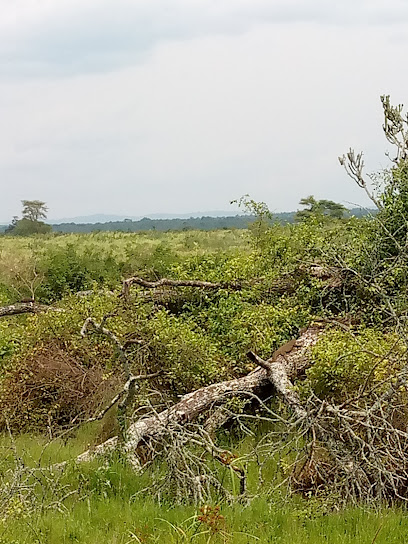
Essential places to dine
Piato Restaurant
Discover authentic East African flavors at Piato Restaurant in Kampala – where every meal tells a story.

Cafesserie Acacia Mall
Discover delightful flavors at Cafesserie Acacia Mall in Kampala - where local meets international cuisine in an inviting atmosphere.

Asian Fusion Restaurant
Experience the best of Chinese and Indian cuisines at Kampala's premier Asian Fusion Restaurant - where flavors meet tradition.
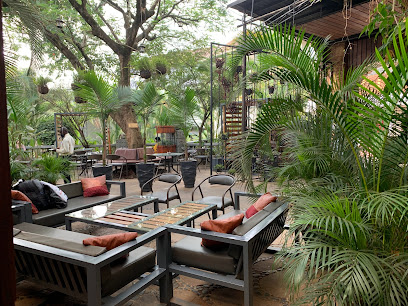
Tamarai
Experience authentic Thai cuisine at Tamarai in Kampala - where vibrant flavors meet a cozy lounge atmosphere.
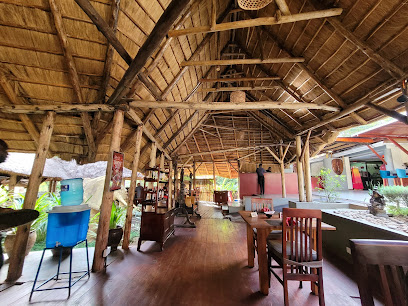
The Lawns Restaurant
Experience exquisite barbecue and fine dining in the heart of Kampala at The Lawns Restaurant - where flavor meets elegance.
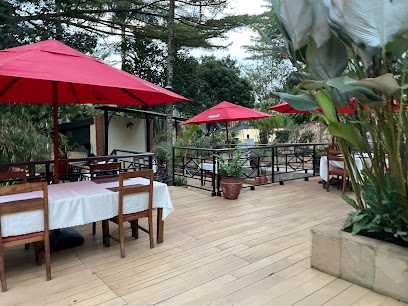
Faze 3
Discover Faze 3: Entebbe's premier dining destination blending local flavors with international cuisine.
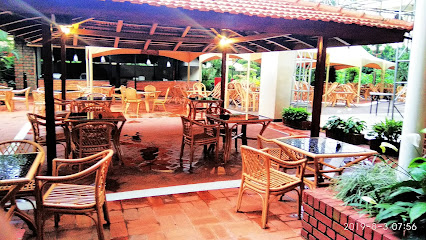
Haandi Restaurant
Experience authentic Indian cuisine at Haandi Restaurant in Kampala – where flavor meets hospitality.

Yujo Izakaya
Discover Yujo Izakaya in Kampala: A vibrant haven for authentic Japanese cuisine with fresh ingredients and welcoming ambiance.

Pardis
Experience authentic Persian flavors at Pardis in Kampala - where each meal is a journey through rich culinary heritage.

Khana Khazana
Experience the essence of India at Khana Khazana in Kampala with authentic dishes crafted from traditional recipes.

Romeo's Restaurant Ntinda
Discover the heart of Ugandan cuisine at Romeo's Restaurant Ntinda—where every dish tells a story.

Gaucho Grill
Experience culinary excellence at Gaucho Grill with delicious grilled specialties in a welcoming atmosphere along Kampala-Entebbe Road.

The Roots Restaurant
Experience authentic Ugandan cuisine at The Roots Restaurant in Kampala – where local flavors meet global tastes.

La Cabana Restaurant
Discover exquisite dining at La Cabana Restaurant in Kampala - where local flavors meet international cuisine amidst stunning views.

Ashiana Restaurant
Experience authentic Indian flavors at Ashiana Restaurant in Kampala - a must-visit for food lovers seeking diverse culinary delights.

Markets, malls and hidden boutiques
Queen Elizabeth National Park
Discover the rich biodiversity and breathtaking landscapes of Queen Elizabeth National Park, a must-visit destination for wildlife enthusiasts in Uganda.
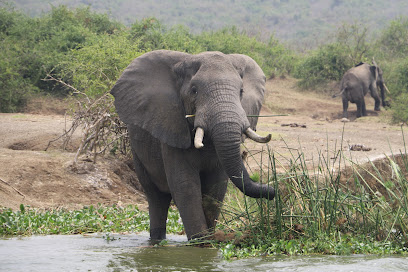
Viewpoint of Salt Pans
Experience breathtaking views and serene landscapes at the Viewpoint of Salt Pans near Kasenyi, a must-visit destination for nature lovers.

Igara Tea Factory
Discover the rich heritage of Ugandan tea at Igara Tea Factory in Kyamuhunga, a perfect blend of nature, culture, and exquisite flavors.

Escarpment Natural honey
Explore the exquisite world of natural honey at Escarpment Natural Honey, a craft store in Kichwamba that embodies Uganda's rich flavors and craftsmanship.

Rwandaro Trading Centre
Experience the vibrant culture of Uganda at Rwandaro Trading Centre, a shopping hub offering local crafts, food, and a lively atmosphere.

Bururuma Trading Centre
Explore Bururuma Trading Centre, a vibrant shopping mall in Uganda, offering local crafts, delicious food, and a taste of genuine Ugandan culture.

Kidandari Trading Centre
Explore the vibrant Kidandari Trading Centre in Ryeru, Uganda, where shopping meets rich local culture amidst a lively market atmosphere.

Kichwamba Trading Centre
Explore Kichwamba Trading Centre: A vibrant shopping mall offering local crafts, cuisine, and a taste of Ugandan culture.

Kyeeya Trading Centre
Explore Kyeeya Trading Centre, a vibrant shopping mall in Uganda, where local culture and modern retail come together for a unique experience.

Shoe center and classy boutique
Explore Katerera's Shoe Center and Classy Boutique for unique footwear and stylish fashion that reflects Uganda's vibrant culture.

Rumuri Trading Centre
Discover the heart of Ugandan commerce at Rumuri Trading Centre, where local culture meets modern shopping in a vibrant atmosphere.

Isaac retail shop
Experience local flavors and culture at Isaac Retail Shop in Bushenyi, your go-to grocery destination for authentic Ugandan products.

Nyakiyanza Trading Centre
Explore the local culture and vibrant commerce at Nyakiyanza Trading Centre, a must-visit shopping destination in Uganda.

Ahakigombe Trading Centre
Discover the vibrant local culture and unique shopping experience at Ahakigombe Trading Centre, a must-visit destination for every traveler.

Queen's Way Supermarket
Explore the vibrant flavors and local treasures at Queen's Way Supermarket in Katunguru, your gateway to Ugandan culture.

Essential bars & hidden hideouts
New World Vision Bar
Discover the lively New World Vision Bar in Kizinda, where vibrant nightlife and a welcoming atmosphere await every visitor.

Hunters choice bar
Experience the lively spirit of Omukacece at Hunters Choice Bar, where local flavors meet a vibrant atmosphere.

HAKA BAR & LODGES
Discover Haka Bar & Lodges: A lively bar in Katerera offering local brews, live music, and a cozy atmosphere for unforgettable evenings.

Tembo Canteen
Discover Tembo Canteen in Mweya for an unforgettable taste of Ugandan cuisine with breathtaking views of nature.

Ark bar and restuarant
Experience the vibrant nightlife and delicious local cuisine at Ark Bar and Restaurant in Ishaka, Uganda.

Sky 7 Bar and Lodges
Experience the vibrant atmosphere of Sky 7 Bar and Lodges in Rubirizi, where scenic views and local flavors come together for an unforgettable experience.

White House Rutookye
Discover the vibrant atmosphere and local culture at White House Rutookye, a premier bar for drinks and socializing in the heart of Uganda.

Bull Wines And Spirits Depot
Experience the best of local and international wines at Bull Wines And Spirits Depot, a cozy wine bar in the heart of Bushenyi.

ORCHARDS GARDEN &ACCOMMODATION
Experience relaxation and local charm at Orchards Garden & Accommodation, the ideal destination for travelers in Kirugu, Uganda.

RIVERS LOUNGE AND BAR
Discover the charm of Rivers Lounge and Bar in Rubirizi, Uganda – a perfect blend of local culture and relaxation amidst stunning landscapes.
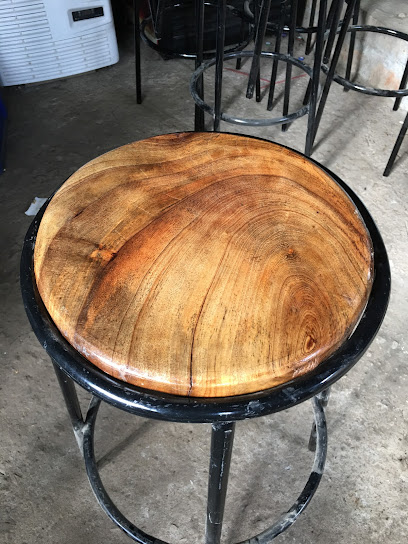
No stress Bar
Discover the taste of Uganda at No Stress Bar, a cozy grill in Bushenyi perfect for relaxation and local flavors.

NEW CHOICE BAR AND LODGES KIZINDA
Discover the local culture and vibrant social scene at New Choice Bar and Lodges Kizinda, a lively destination for drinks and relaxation.

Elite Pub And Gardens.
Experience local culture and relaxation at Elite Pub And Gardens in Kambuga, a charming bar surrounded by lush gardens and a vibrant atmosphere.

N
Discover the vibrant atmosphere and expertly crafted cocktails at N, the ultimate bar experience in Uganda's lively nightlife.

End Zone Lounge
Experience the vibrant atmosphere of End Zone Lounge in Ishaka, where relaxation meets local culture in a chic setting.

Local Phrases about Queen Elizabeth National Park
-
- HelloKi kati
[Kee kah-tee] - GoodbyeWebale nyo
[Weh-bah-lay nyoh] - YesWee
[Wee] - NoNedda
[Neh-dah] - Please/You're welcomeMwebale
[Mweh-bah-lay] - Thank youWebale nnyo
[Weh-bah-lay nyoh] - Excuse me/SorryNambula
[Nahm-boo-lah] - How are you?Oli otya?
[Oh-lee oh-tyah] - Fine. And you?Bulungi. Owekisa?
[Boo-loon-gee. Oh-weh-kee-sah] - Do you speak English?Omanyi Olungereza?
[Oh-mahn-yee Oh-loon-geh-reh-zah] - I don't understandSikilaba
[See-kee-lah-bah]
- HelloKi kati
-
- I'd like to see the menu, pleaseNjagala kuyita emmundu, nyabo
[Njah-gah-lah koo-yee-tah ehm-moon-doo, nyah-boh] - I don't eat meatSikulya emmere
[See-kool-yah ehm-meh-reh] - Cheers!Londa!
[Lohn-dah] - I would like to pay, pleaseNjagala okutuuka, nyabo
[Njah-gah-lah oh-koo-too-kah, nyah-boh]
- I'd like to see the menu, pleaseNjagala kuyita emmundu, nyabo
-
- Help!Tusabe!
[Too-sah-bay] - Go away!Genda
[Gehn-dah] - Call the Police!Tuyige Poliisi!
[Too-yee-geh Poh-lee-see] - Call a doctor!Tuyige dokita!
[Too-yee-geh doh-kee-tah] - I'm lostNnali mulabye
[Nyah-lee moo-lahb-yeh] - I'm illNdi musiru
[Ndee moo-see-roo]
- Help!Tusabe!
-
- I'd like to buy...Njagala okola...
[Njah-gah-lah oh-koh-lah...] - I'm just lookingNkola okuyimba
[Nkoh-lah oh-koo-yim-bah] - How much is it?Birungi bino buli?
[Bee-roon-gee bee-noh boo-lee] - That's too expensiveEbyo bingi byaffe
[Eh-byoh beeng-ee byahf-fay] - Can you lower the price?Ow'olugoye?
[Oh-woh-loo-goy-yeh]
- I'd like to buy...Njagala okola...
-
- What time is it?Ssente ekitiibwa kati?
[Sen-teh eh-kee-tee-bwah kah-tee] - It's one o'clockSsawa mu kumi
[Sah-wah moo koo-mee] - Half past (10)N'olugenda mu kumi
[Noh-loo-gen-dah moo koo-mee] - MorningOlumansi
[Oh-loo-man-see] - AfternoonOlw'ekiro
[Oll-weh-kee-roh] - EveningOlw'omwaka
[Oll-wohm-wah-kah] - YesterdayLutakwenda
[Loo-tah-kwen-dah] - TodayEno
[Eh-noh] - TomorrowFfe
[Feh] - 1Muwala
[Moo-wah-lah] - 2Biri
[Bee-ree] - 3Nnyanja
[Nnyan-jah] - 4Nnya
[Nnyah] - 5Tano
[Tah-noh] - 6Mukaaga
[Moo-kah-gah] - 7Musanvu
[Moo-sahn-voo] - 8Munaana
[Moo-nah-nah] - 9Mukenda
[Moo-ken-dah] - 10Mikumi
[Mee-koo-mee]
- What time is it?Ssente ekitiibwa kati?
-
- Where's a/the...?Wali a/...
[Wah-lee ah/...] - What's the address?Ekitabo ky'emyumba kiti?
[Eh-kee-tah-boh kyeh-myoohm-bah kah-tee] - Can you show me (on the map)?Olugumisa wano?
[Oh-loo-goo-mee-sah wah-noh] - When's the next (bus)?Eky'okutuuka kiri mu kawunga?
[Eh-kyoh-koo-too-kah kee-ree moo kah-woong-gah] - A ticket (to ....)Ekisera (ku ....)
[Eh-kee-seh-rah (koo ....)]
- Where's a/the...?Wali a/...
History of Queen Elizabeth National Park
-
Before the establishment of Queen Elizabeth National Park, the region was inhabited by various indigenous tribes such as the Basongora, Banyankole, and Bakonzo. These tribes relied on the rich biodiversity of the area for hunting, fishing, and agriculture.
-
Queen Elizabeth National Park was officially established in 1952 and was initially named Kazinga National Park. It was renamed two years later in honor of a visit by Queen Elizabeth II. The park's creation was part of a broader effort by British colonial authorities to protect Uganda’s wildlife and natural habitats.
-
The Kazinga Channel is a natural channel connecting Lake George and Lake Edward, and it is one of the park's most defining features. The channel has historically been a critical water source for both wildlife and local communities. Today, it serves as a major attraction for boat safaris and bird watching.
-
The park is not only a haven for wildlife but also a cultural repository. The traditional practices and folklore of the local tribes are closely tied to the land and its natural resources. Various cultural sites within and around the park, such as the Katwe Salt Lake, highlight the intersection of nature and human heritage.
-
Over the decades, Queen Elizabeth National Park has been at the forefront of conservation efforts in Uganda. The Uganda Wildlife Authority, along with various international NGOs, has implemented numerous programs to protect the park's diverse ecosystems and endangered species, such as the tree-climbing lions of Ishasha.
-
Like many parts of Uganda, Queen Elizabeth National Park was affected by periods of civil unrest, particularly during the 1970s and 1980s. Poaching and habitat destruction increased during these times of instability. However, significant strides have been made in recent years to restore and protect the park.
-
Today, Queen Elizabeth National Park is one of Uganda's most visited national parks, attracting tourists from around the world. It plays a vital role in the country’s tourism industry, contributing to both local and national economies. The park continues to be a living testament to Uganda's rich natural and cultural heritage.
Queen Elizabeth National Park Essentials
-
Queen Elizabeth National Park is located in western Uganda, spanning the districts of Kasese, Kamwenge, Rubirizi, and Rukungiri. The nearest international airport is Entebbe International Airport, approximately 420 kilometers away. From Entebbe, you can take a domestic flight to Kasese, which is the closest airstrip to the park. Alternatively, you can travel by road from Kampala, Uganda's capital, to the park, which takes about 6 to 7 hours. Private car hire services and tour operators are available for more comfortable travel.
-
Within Queen Elizabeth National Park, the most common mode of transportation is a 4x4 vehicle due to the rugged terrain. Many lodges and tour operators offer guided safari drives. For independent travelers, renting a 4x4 vehicle is recommended. There are also boat safaris available on the Kazinga Channel, which offer a unique perspective of the park's wildlife. Public transport options are limited within the park, so it is best to arrange your transportation in advance.
-
The official currency in Uganda is the Ugandan Shilling (UGX). Credit and debit cards are accepted in some lodges and higher-end restaurants, but it is advisable to carry cash, especially when visiting remote areas within the park. ATMs are available in nearby towns such as Kasese and Fort Portal. It is wise to withdraw sufficient cash before entering the park to cover your expenses.
-
Queen Elizabeth National Park is generally safe for tourists. However, standard travel precautions should be taken. Avoid walking alone at night and keep your valuables secure. There are no specific high-crime areas targeting tourists, but it is always best to stay vigilant and aware of your surroundings. Follow park regulations and do not wander off designated paths, as wildlife can be dangerous. Always travel with a guide when exploring remote areas of the park.
-
In case of an emergency, contact the Uganda Wildlife Authority (UWA) rangers stationed within the park. They are trained to handle various emergencies, including medical situations and wildlife encounters. The emergency contact number for UWA is +256 414 355000. It is recommended to have travel insurance that covers medical emergencies. For minor health issues, first aid kits are available at most lodges, and there are medical facilities in nearby towns such as Kasese.
-
Fashion: Do wear light, breathable clothing and comfortable walking shoes. Avoid bright colors that can attract insects. Religion: Do respect local customs and traditions. Dress modestly when visiting nearby communities. Public Transport: Do use pre-arranged transport services. Don't rely on public transport within the park. Greetings: Do greet people with a handshake and a friendly smile. Learning a few phrases in the local language, such as 'hello' (oga) and 'thank you' (webale), can go a long way. Eating & Drinking: Do try local dishes such as matoke (cooked bananas) and fresh fish from the lakes. Don't drink tap water; always opt for bottled or boiled water.
-
To experience Queen Elizabeth National Park like a local, consider visiting the nearby communities, such as Katwe, known for its salt mining industry. Engaging with locals can provide unique insights into their way of life. Participate in cultural tours offered by local guides to learn about traditional practices and crafts. For a unique experience, don’t miss the tree-climbing lions in the Ishasha sector or a boat safari on the Kazinga Channel, which offers one of the highest concentrations of hippos in Africa.
Trending Landmarks in Queen Elizabeth National Park
-
Murchison Falls National Park
-
Bwindi Impenetrable Forest National Park
-
Lake Mburo National Park
-
Kibale National Park
-
Ziwa Rhino and Wildlife Ranch
-
Rwenzori Mountains National Park
-
Kidepo National Park Uganda
-
Mgahinga Gorilla National Park
-
Mabira Central Forest Reserve
-
Pian Upe Game Reserve
-
Queen Elisabeth Bush Lodge
-
Semuliki National Park
-
Ngamba Chimpanzee sanctuary on lake victoria
-
ishasha sector
-
Ishasha Wilderness Camp - Queen Elizabeth National Park
Nearby Cities to Queen Elizabeth National Park
-
Things To Do in Fort Portal
-
Things To Do in Nyagatare
-
Things To Do in Ruhengeri
-
Things To Do in Rubavu
-
Things To Do in Gisenyi
-
Things To Do in Kigali
-
Things To Do in Masaka
-
Things To Do in Muhanga
-
Things To Do in Kibuye
-
Things To Do in Nyamata
-
Things To Do in Karongi
-
Things To Do in Bukoba
-
Things To Do in Kirundo
-
Things To Do in Butare
-
Things To Do in Entebbe








